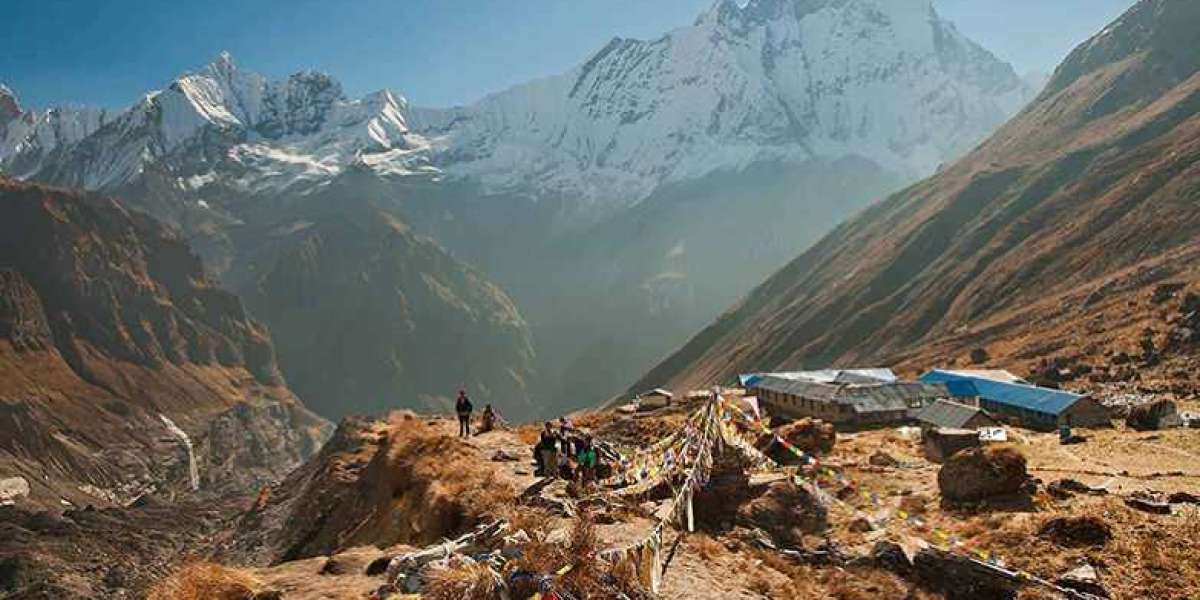Nepal, with its stunning landscapes, towering mountains, and rich cultural heritage, has long been a magnet for trekkers and adventure enthusiasts. One of the most sought-after trekking destinations in Nepal is the Annapurna Base Camp (ABC). Nestled in the heart of the Annapurna Himalayas, this trek offers a mesmerizing journey through diverse terrain, quaint villages, lush forests, and ultimately culminates at the base of the majestic Annapurna massif. Planning an Annapurna Base Camp trek requires careful consideration and preparation. Here’s a comprehensive guide to help you plan your adventure of a lifetime.
Choosing the Right Time
The Annapurna Base Camp trek can be undertaken throughout the year, but the best seasons are autumn (September to November) and spring (March to May). During these months, the weather is relatively stable, offering clear skies and moderate temperatures. Spring brings blooming rhododendrons and lush vegetation, while autumn offers stunning mountain vistas after the monsoon season. Winter (December to February) and summer (June to August) are less popular due to colder temperatures and unpredictable weather.
Permits and Regulations
Before embarking on the trek, you’ll need to obtain necessary permits. The two primary permits required for the Annapurna Base Camp trek are the Annapurna Conservation Area Permit (ACAP) and the Trekkers’ Information Management System (TIMS) card. These permits are usually available in Kathmandu and Pokhara, and you can also get them through registered trekking agencies.
Physical Fitness and Training
While the Annapurna Base Camp trek doesn’t demand mountaineering expertise, a reasonable level of physical fitness is essential. The trek involves walking for 6-8 hours a day in varying terrains, including steep ascents and descents. Prior cardiovascular and strength training can greatly enhance your trekking experience. Consult a healthcare professional before embarking on any fitness regimen.
Itinerary Planning
The standard Annapurna Base Camp trek takes around 7-12 days, depending on your starting point and pace. There are various routes to choose from, with the most common one starting in Nayapul and passing through Ghorepani, Tadapani, Chhomrong, Bamboo, Deurali, and finally reaching the base camp. Consider acclimatization days to prevent altitude sickness. These rest days allow your body to adjust to the increasing elevation.
Accommodation and Meals
The trekking trail is dotted with teahouses offering basic accommodation and meals. These teahouses provide a cozy place to rest and refuel, with traditional Nepali dal bhat (rice and lentils) being a staple. While accommodation can be quite basic, it's all part of the trekking experience. Be prepared for shared rooms and limited amenities at higher altitudes.
Packing Essentials
Packing smart is crucial to a successful trek. Some essentials include:
- Clothing: Layering is key. Pack moisture-wicking base layers, insulating mid-layers, and waterproof outer shells. Don't forget a good pair of trekking pants, gloves, a beanie, and a sun hat.
- Footwear: Invest in sturdy, well-fitting trekking boots with ankle support. Also, carry comfortable socks that wick moisture away.
- Gear: A down jacket, a sleeping bag suitable for cold temperatures, a trekking pole, and a backpack are essential. A good quality headlamp, sunglasses, and a reusable water bottle are also recommended.
- Personal Items: Sunscreen, lip balm, hand sanitizer, and basic toiletries are essential. A basic medical kit with essentials like band-aids, pain relievers, and altitude sickness medication should also be included.
Hiring Guides and Porters
While the Annapurna Base Camp trek can be done independently, hiring a local guide or porter can enhance your experience. Guides provide valuable insights into local culture, geography, and ensure safety. Porters can carry your heavy backpack, allowing you to enjoy the trek without excessive weight.
Environmental Considerations
Responsible trekking is crucial to preserving the beauty of the Annapurna region. Always adhere to the principles of "Leave No Trace." Minimize your impact by carrying out all trash, using reusable water bottles, and respecting local customs and traditions.
Conclusion
The Annapurna Base Camp trek is a soul-stirring journey that promises breathtaking landscapes and a profound connection with nature. Adequate planning and preparation are essential to ensure a safe and enjoyable trekking experience. By selecting the right time, obtaining permits, staying physically fit, crafting a well-thought-out itinerary, and packing wisely, you can make the most of this unforgettable adventure in the heart of the Annapurna Himalayas.







